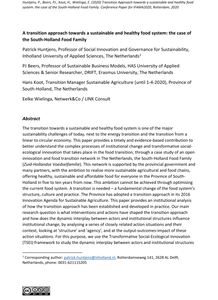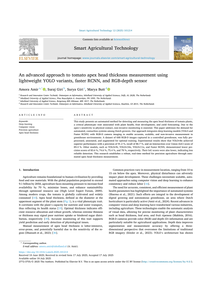For environmental governance to be more effective and transformative, it needs to enhance the presence of experimental and innovative approaches for participation. This enhancement requires a transformation of environmental governance, as too often the (public) participation process is set up as a formal obligation in the development of a proposed intervention. This article, in search of alternatives, and in support of this transformation elaborates on spaces where participatory and deliberative governance processes have been deployed. Experiences with two mediated participation methodologies – community art and visual problem appraisal – allow a demonstration of their potential, relevance and attractiveness. Additionally, the article analyzes the challenges that result from the nature of these arts-based methodologies, from the confrontational aspects of voices overlooked in conventional approaches, and from the need to rethink professionals’ competences. Considering current environmental urgencies, mediated participation and social imaginaries still demonstrate capacities to open new avenues for action and reflection.
DOCUMENT

The transition towards a sustainable and healthy food system is one of the major sustainability challenges of today, next to the energy transition and the transition from a linear to circular economy. This paper provides a timely and evidence-based contribution to better understand the complex processes of institutional change and transformative social-ecological innovation that takes place in the food transition, through a case study of an open innovation and food transition network in The Netherlands, the South-Holland Food Family (Zuid-Hollandse Voedselfamilie). This network is supported by the provincial government and many partners, with the ambition to realize more sustainable agricultural and food chains, offering healthy, sustainable and affordable food for everyone in the Province of South-Holland in five to ten years from now. This ambition cannot be achieved through optimising the current food system. A transition is needed – a fundamental change of the food system’s structure, culture and practice. The Province has adopted a transition approach in its 2016 Innovation Agenda for Sustainable Agriculture. This paper provides an institutional analysis of how the transition approach has been established and developed in practice. Our main research question is what interventions and actions have shaped the transition approach and how does the dynamic interplay between actors and institutional structures influence institutional change, by analysing a series of closely related action situations and their context, looking at 'structure' and 'agency', and at the output-outcomes-impact of these action situations. For this purpose, we use the Transformative Social-Ecological Innovation (TSEI)-framework to study the dynamic interplay between actors and institutional structures influencing institutional change. The example of TSEI-framework application in this paper shows when and how local agents change the institutional context itself, which provides relevant insights on institutional work and the mutually constitutive nature of structure and agency. Above institutional analysis also shows the pivotal role of a number of actors, such as network facilitators and provincial minister, and their capability and skills to combine formal and informal institutional environments and logics and mobilize resources, thereby legitimizing and supporting the change effort. The results are indicative of the importance of institutional structures as both facilitating (i.e., the province’s policies) and limiting (e.g. land ownership) transition dynamics.
DOCUMENT

This research concerning the experience and future of zoos was carried out from 2011-2012 and takes regional ideas concerning Zoo Emmen as well as global visions into account. The research focuses partly on Zoo Emmen, its present attractions and visitors while also comparing and contrasting visions on the future in relationship to other international zoos in the world. In this way, remarkable experiences and ideas will be identified and in the light of them, it can serve as inspiration for stakeholders of zoos at large. The main research subject is a look at the future zoos in view of: The Zoo Experience – an international experience benchmark; The Zoo of the Future – a Scenario Planning approach towards the future; The virtual zoo - zoo’s in the internet domain.
DOCUMENT

Op basis van een uitgebreide literatuurstudie, 25 interviews met gebiedspartijen in Midden-Delfland en een aantal multi-stakeholders workshops is in kaart gebracht hoe een gebiedsgerichte aanpak gericht op landschapinclusieve kringlooplandbouw in Midden-Delfland vorm krijgt dan wel versterkt kan worden. Hiervoor is de Transitiebloem-aanpak (TBA) gebruikt als holistische, transdisciplinaire en praktijkgerichte transitiebenadering. Deze benadering helpt gebiedspartijen bij het realiseren van een integrale systeemaanpak en collectief handelingsperspectief gericht op de samenhang van verschillende gebiedsopgaven met betrekking tot landbouw, water, voedsel, bodem, biodiversiteit, energie, klimaat, erfgoed, stadplattelandrelaties en economie.
DOCUMENT

This study presents an automated method for detecting and measuring the apex head thickness of tomato plants, a critical phenotypic trait associated with plant health, fruit development, and yield forecasting. Due to the apex's sensitivity to physical contact, non-invasive monitoring is essential. This paper addresses the demand for automated, contactless systems among Dutch growers. Our approach integrates deep learning models (YOLO and Faster RCNN) with RGB-D camera imaging to enable accurate, scalable, and non-invasive measurement in greenhouse environments. A dataset of 600 RGB-D images captured in a controlled greenhouse, was fully preprocessed, annotated, and augmented for optimal training. Experimental results show that YOLOv8n achieved superior performance with a precision of 91.2 %, recall of 86.7 %, and an Intersection over Union (IoU) score of 89.4 %. Other models, such as YOLOv9t, YOLOv10n, YOLOv11n, and Faster RCNN, demonstrated lower precision scores of 83.6 %, 74.6 %, 75.4 %, and 78 %, respectively. Their IoU scores were also lower, indicating less reliable detection. This research establishes a robust, real-time method for precision agriculture through automated apex head thickness measurement.
DOCUMENT

Op basis van een literatuurstudie biedt dit rapport een overzicht van sleutelvariabelen voor de transitie naar Natuur-inclusieve Landbouw (NIL) vanuit een multi-level en multi-dimensionaal systeemperspectief. Het doel van de literatuurstudie is om te analyseren welke succes- en faalfactoren in de literatuur genoemd worden om de transitie naar een natuurinclusieve landbouw mogelijk te maken dan wel te versnellen. Deze studie geeft daarmee handen en voeten aan een handelingsperspectief voor NIL. Dit handelingsperspectief vergt maatwerk per gebied, en kan verschillen afhankelijk van het schaalniveau waarop geacteerd wordt, en is afhankelijk van de mate waarin sleutelfactoren en betrokken actoren elkaar versterken of beperken.
DOCUMENT

We are currently in a transition moving from a linear economy grounded on economic value maximization based on material transformation to a circular economy. Core of this transition is organising value preservation from various yet interlinked perspectives. The underlying fundamental shift is to move away from mere financial value maximization towards multiple value creation (WCED, 1987; Jonker, 2014; Raworth, 2017). This implies moving from mere economic value creation, to simultaneously and in a balanced way creating ecological and social value. A parallel development supporting this transition can be observed in accounting & control. Elkington (1994) introduced the triple bottom line (TBL) concept, referring to the economic, ecological and social impact of companies. The TBL should be seen more as a conceptual way of thinking, rather than a practical innovative accounting tool to monitor and control sustainable value (Rambaud & Richard, 2015). However, it has inspired accounting & control practitioners to develop accounting tools that not only aim at economic value (‘single capital’ accounting) but also at multiple forms of capital (‘multi capital’ accounting or integrated reporting). This has led to a variety of integrated reporting platforms such as Global Reporting Initiative (GRI), International Integrated Reporting Framework (IIRC), Dow Jones Sustainable Indexes (DJSI), True Costing, Reporting 3.0, etc. These integrated reporting platforms and corresponding accounting concepts, can be seen as a fundament for management control systems focussing on multiple value creation. This leads to the following research question: How are management control systems designed in practice to drive multiple value creation?
MULTIFILE

Inaugural address of Frederike Praasterink, Professor Future Food Systems 22 February 2018. Three important principles contribute to the transformation of food systems: - Redesign food systems from ‘less bad’ to ‘net positive’ - Reconnect consumers, producers, youth - Revalue food through true cost accounting and new business models
DOCUMENT

This document summarizes the main findings of the ERASMUS+ Strategic Partnership ‘Community Learning for Local Change (CLLC)’. The CLLC project has been running from September 2018 to August 2021. The project was a cooperation of four universities, three NGOs and various local community partners. Our consortium presents new approach to promote creativity, entrepreneurial thinking and skills for designing innovation in close cooperation with the communities in which our universities are embedded.
DOCUMENT

This chapter presents the currently not established and identifies design requirements for new systems to address this challenge and provide directions for possible improvement. As a result, this chapter introduces the concept of SamenMarkt®, a participatory system in which multi-agent system technology enables distributed price negotiation, distribution and communication between producers, retailers and consumers.
LINK